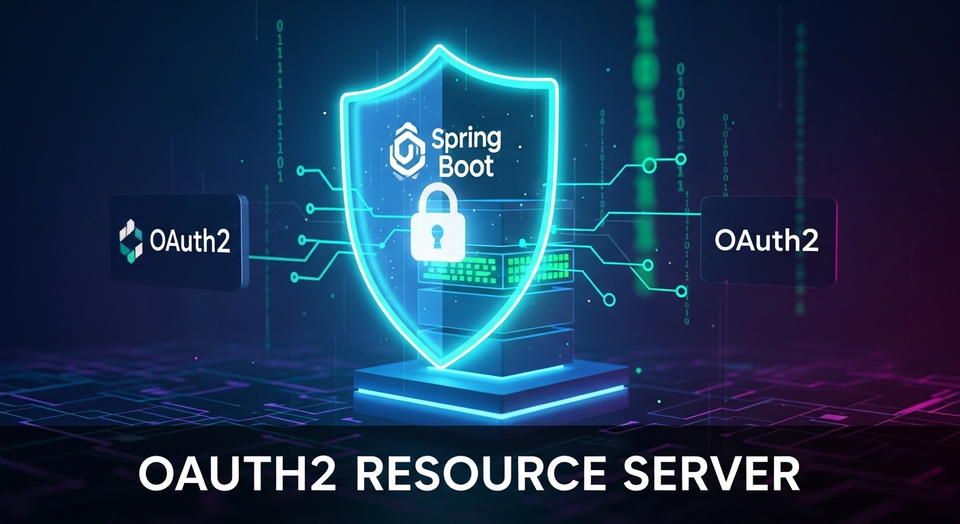Spring Boot Keycloak Production Security | ආරක්ෂිතව Deploy කරමු SC Guide

ආයුබෝවන් අපේ දක්ෂ Software Engineers ලා ට!
අද කතා කරන්න යන්නේ ගොඩක් වැදගත්, හැබැයි සමහරුන්ට ටිකක් අමතක වෙන මාතෘකාවක් ගැන. අපි හැමෝම ලස්සනට Spring Boot Application එකක් හදලා, Keycloak වලින් ආරක්ෂාව (Security) දාලා, Local එකේදී වැඩ කරනවා කියලා sure කරගන්නවා. හැබැයි Production එකට යනකොට මේ "Security" කියන දේට තව ගොඩක් දේවල් එකතු කරන්න ඕනේ. අද අපි බලමු Spring Boot සහ Keycloak Production එකේදී ආරක්ෂිතව, දක්ෂ විදියට (efficiently) සහ බලගතු විදියට (resiliently) maintain කරන්නේ කොහොමද කියලා.
1. Production එකට හරියට Security දාමු (Security Hardening)
Local එකේදී වැඩ කරන විදිය නෙවෙයි Production කියන්නේ. Production එකේදී අපේ Application එක හැමෝටම expose වෙනවා. ඒ නිසා Attackers ලගෙන් ආරක්ෂා වෙන්න අපි extra steps ගන්න ඕනේ.
Secure Coding Practices:
- Input Validation: හැම User input එකක්ම validate කරන්න. SQL Injection, XSS (Cross-Site Scripting) වගේ attacks වලක්වගන්න මේක අත්යවශ්යයි. Spring Security එකේ CSRF (Cross-Site Request Forgery) protection වගේ දේවල් default active කරලා තියෙන්නේ. ඒ වගේම parameter sanitization අනිවාර්යයෙන්ම කරන්න.
- Least Privilege Principle: Application එකට අවශ්ය අවම permissions විතරක් දෙන්න. Database user කෙනෙක්ට update, delete විතරක් අවශ්ය නම්, select permission දෙන්න එපා.
- Error Handling: Production එකේදී හැම Error message එකක්ම User ට පෙන්නන්න එපා. Sensitive data leak වෙන්න පුළුවන්. Generic error messages පෙන්වලා, වැඩි විස්තර Logs වලට ලියන්න.
Dependency Management:
අපි පාවිච්චි කරන third-party libraries වල security vulnerabilities තියෙන්න පුළුවන්. OWASP Dependency-Check වගේ tools පාවිච්චි කරලා continuous scan කරන්න. Snyk, Renovate වගේ tools වලින් automate කරන්නත් පුළුවන්.
Configuration Security:
- HTTPS everywhere: Application එකට එන හැම request එකක්ම HTTPS වලින් එන්න සලස්වන්න. Load Balancer, Nginx වගේ දේවල් පාවිච්චි කරනවා නම්, ඒවා Configuration එකත් HTTPS වලට සකස් කරන්න. Spring Boot එකේ
server.ssl.*properties පාවිච්චි කරලා SSL/TLS configure කරන්න පුළුවන්. - Strong Passwords & Secrets Management: Hardcoded passwords තියාගන්න එපා. Database credentials, API keys වගේ sensitive information ටික HashiCorp Vault, AWS Secrets Manager, Azure Key Vault වගේ tools පාවිච්චි කරලා manage කරන්න. Spring Cloud Config Server වගේ දේවලුත් මේකට උදව් වෙනවා.
- Disable Debug/Tracing: Production එකේදී Debugging හෝ Tracing options disable කරන්න. ඒවා Performance එකට බලපානවා වගේම Attack Surface එක වැඩි කරනවා.
2. Security Failure එකකට සූදානම් වෙමු & Smart Logging
Security failures කියන්නේ අපිට ඕන වෙන්නේ නැති දෙයක්. හැබැයි ඒ වගේ දෙයක් වුණොත් කොහොමද handle කරන්නේ කියලා දැනගෙන ඉන්න එක ගොඩක් වැදගත්.
Incident Response Plan:
Attack එකක් හෝ data breach එකක් වුණොත් මොනවද කරන්නේ කියලා කලින්ම Plan එකක් හදාගන්න. කවුද inform කරන්නේ, කොහොමද system එක isolate කරන්නේ, data recovery කරන්නේ කොහොමද වගේ දේවල් මේ Plan එකේ තියෙන්න ඕනේ.
Effective Logging:
හරි විදියට Log කරන එක Security failures troubleshoot කරන්න අත්යවශ්යයි.
- What to Log: Authentication attempts (success/failure), authorization failures, data access patterns, configuration changes, external API calls, exception details වගේ දේවල් අනිවාර්යයෙන් log කරන්න. Sensitive data (passwords, credit card numbers) log නොකරන්න වගබලා ගන්න.
- Log Levels: INFO, WARN, ERROR වගේ standard log levels පාවිච්චි කරන්න. Debug logs Production එකේදී disable කරන්න.
- Centralized Logging: ELK Stack (Elasticsearch, Logstash, Kibana), Splunk, Grafana Loki වගේ tools පාවිච්චි කරලා logs ටික centralized කරන්න. මේකෙන් Troubleshooting සහ Security monitoring ලේසි වෙනවා. Correlation IDs පාවිච්චි කරලා requests ටික trace කරන්න.
- Log Rotation & Retention: Logs ගොඩ ගැහෙන්න නොදී rotation policy එකක් හදාගන්න. නීතිමය අවශ්යතා අනුව Log retention period එකක් maintain කරන්න.
// Example: Basic Logger in Spring Boot
import org.slf4j.Logger;
import org.slf4j.LoggerFactory;
import org.springframework.stereotype.Service;
@Service
public class UserService {
private static final Logger logger = LoggerFactory.getLogger(UserService.class);
public void createUser(String username) {
// ... user creation logic ...
logger.info("User created successfully: {}", username); // Good practice
// logger.debug("Full user object: {}", user); // Avoid in production logs
}
public void loginAttempt(String username, boolean success) {
if (success) {
logger.info("Successful login for user: {}", username);
} else {
logger.warn("Failed login attempt for user: {}", username);
// Optionally, log client IP, user agent, etc. for security analysis
}
}
}
3. Spring Boot Application එක බලගතු කරමු (Resilience & Performance)
Security විතරක් මදි. අපේ Application එක Production එකේදී දක්ෂ විදියට (performant) සහ ඕනම ප්රශ්නයකට ඔරොත්තු දෙන (resilient) විදියට හැසිරෙන්න ඕනේ.
Circuit Breakers & Retries:
External dependencies (APIs, Databases) down වුණොත් අපේ Application එකත් slow වෙන්න, crash වෙන්න පුළුවන්. Resilience4j වගේ libraries පාවිච්චි කරලා Circuit Breakers සහ Retry mechanisms implement කරන්න. මේකෙන් External services fail වුණත් අපේ Application එක හිරවෙන්නේ නැතුව, නියමිත කාලයකට පස්සේ ආයේ try කරන්න පුළුවන් වෙනවා.
# application.yml for Resilience4j Circuit Breaker (conceptual)
resilience4j.circuitbreaker:
instances:
myExternalService:
registerHealthIndicator: true
slidingWindowType: COUNT_BASED
slidingWindowSize: 10
failureRateThreshold: 50
waitDurationInOpenState: 5s
permittedNumberOfCallsInHalfOpenState: 3
Connection Pooling & Resource Management:
Database connections, Thread pools වගේ දේවල් හරියට manage කරන්න. HikariCP වගේ connection pools Spring Boot එකේ default විදියටම තියෙනවා. ඒවා configure කරද්දී Production load එකට ගැළපෙන විදියට max connections, idle timeouts වගේ දේවල් සකස් කරන්න.
Monitoring & Alerting:
Prometheus, Grafana, Micrometer වගේ tools පාවිච්චි කරලා Application metrics monitor කරන්න. CPU usage, Memory consumption, API response times, Error rates වගේ දේවල් monitor කරන එකෙන් ගැටලු එන්න කලින්ම හඳුනාගන්න පුළුවන්. අනික Alerts configure කරන්න. (e.g. CPU 80% ට වඩා වැඩි නම් notification එකක් එන්න.)
4. Keycloak Production Cluster එකක් හදමු (Deployment & Maintenance)
Keycloak කියන්නේ අපේ Identity and Access Management (IAM) Solution එක. මේක Production එකේදී Single instance එකක් විදියට run කරන එක හොඳ නැහැ. High Availability (HA) සහ Scalability වෙනුවෙන් Cluster එකක් විදියට Deploy කරන්න ඕනේ.
Database Setup:
Keycloak වලට dedicated Database එකක් (PostgreSQL, MySQL, Oracle) පාවිච්චි කරන්න. Production එකේදී embedded H2 database එක පාවිච්චි කරන්න එපා. Database එකත් Highly Available වෙන විදියට configure කරන්න (e.g., PostgreSQL with replication, RDS Multi-AZ).
Clustering & Load Balancing:
Keycloak instances කිහිපයක් Load Balancer (Nginx, HAProxy, AWS ALB) එකක් පිටිපස්සේ තියලා run කරන්න. JGroups වගේ frameworks වලින් instances අතර communication සහ session replication handle කරන්න පුළුවන්. Keycloak Container (Docker, Kubernetes) එකක් විදියට deploy කරනවා නම්, Kubernetes StatefulSets වගේ දේවල් මේකට ගොඩක් උදව් වෙනවා.
# Example: Basic Keycloak Docker-Compose for a cluster (conceptual)
version: '3.8'
services:
keycloak-db:
image: postgres:13
environment:
POSTGRES_DB: keycloak
POSTGRES_USER: keycloak
POSTGRES_PASSWORD: password
volumes:
- kc-db-data:/var/lib/postgresql/data
keycloak1:
image: quay.io/keycloak/keycloak:18.0.0 # Use a stable version
environment:
KC_DB: postgres
KC_DB_URL_HOST: keycloak-db
KC_DB_USERNAME: keycloak
KC_DB_PASSWORD: password
KC_HOSTNAME: auth.yourdomain.com
KC_PROXY: edge
KC_LOG_LEVEL: INFO
KC_HTTP_ENABLED: true # Enable HTTP if behind a proxy handling HTTPS
ports:
- "8080:8080"
command: start --auto-build --optimized # For production
depends_on:
- keycloak-db
keycloak2:
image: quay.io/keycloak/keycloak:18.0.0
environment:
KC_DB: postgres
KC_DB_URL_HOST: keycloak-db
KC_DB_USERNAME: keycloak
KC_DB_PASSWORD: password
KC_HOSTNAME: auth.yourdomain.com
KC_PROXY: edge
KC_LOG_LEVEL: INFO
KC_HTTP_ENABLED: true
ports:
- "8081:8080"
command: start --auto-build --optimized
depends_on:
- keycloak-db
volumes:
kc-db-data:
Note: Production environment for Keycloak should use HTTPS on the Load Balancer/Proxy layer and potentially mutual TLS between the proxy and Keycloak instances. The above example is simplified for illustration.
Performance Tuning:
- Cache Configuration: Keycloak Cache එක හරියට configure කරන්න. Users, roles, sessions වගේ දේවල් cache කරන එකෙන් Database load එක අඩු වෙනවා. Infinispan වගේ distributed cache solution එකක් පාවිච්චි කරන්න.
- JVM Tuning: Keycloak run වෙන JVM එකට Memory (Heap size) හරියට allocate කරන්න. Garbage Collection (GC) logs monitor කරලා performance issues හඳුනාගන්න.
Health Checks & Backup/Restore:
Keycloak instances වල health status monitor කරන්න. Kubernetes වගේ platform එකක Readines and Liveness probes configure කරන්න. Keycloak Database එකේ regular backups අනිවාර්යයෙන්ම ගන්න. Disaster recovery plan එකක් තියෙන්න ඕනේ.
5. අවසාන වශයෙන්: ආරක්ෂාවට වැඩ කරමු!
දැක්කනේ Production එකේදී Spring Boot සහ Keycloak ආරක්ෂිතව, දක්ෂ විදියට maintain කරන්න ගොඩක් දේවල් කරන්න තියෙනවා. මේ හැමදේම එකපාරටම කරන්න බැරි වෙන්න පුළුවන්. හැබැයි මේවා ගැන දැනගෙන, පොඩි පොඩි දේවල් වලින් පටන් අරන්, කාලයක් එක්ක හයිය security posture එකක් හදාගන්න පුළුවන්.
හිතලා බලන්න, අපේ Application එකේ Data breach එකක් වුණොත් මොකද වෙන්නේ කියලා? ඒක Business එකට, User trust එකට ලොකු හානියක්. ඒ නිසා Security කියන දේ Development lifecycle එකේ මුල ඉඳන්ම හිතන්න ඕනේ. එකපාරටම Deploy කරලා "බලමු මොකද වෙන්නේ" කියලා හිතන්නේ නැතුව, හොඳට Plan කරලා, Test කරලා Deploy කරන්න.
ඔයාලට මේ ගැන අදහස් මොනවද? මේ Tips වලට අමතරව ඔයාලා Production එකේදී Security, Resilience, Performance වෙනුවෙන් මොනවද කරන්නේ? පහළින් comment එකක් දාලා අනිත් අයත් එක්කත් බෙදාගන්න. මේ වගේ තව දේවල් ගැන දැනගන්න ඕන නම් ඒකත් කියන්න! හැමදාම වගේ Happy Coding!
